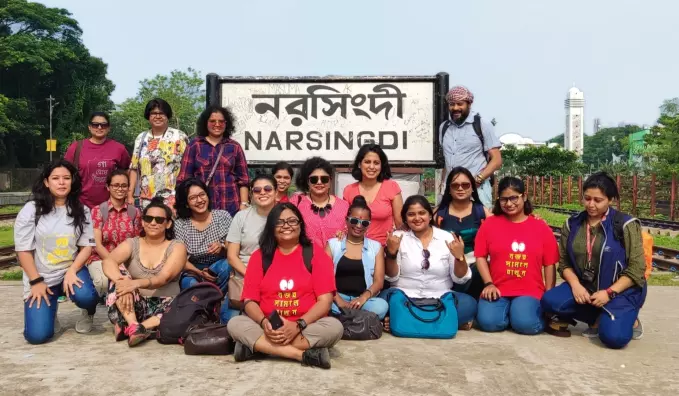The killing of Mahsa Amini in police custody has sparked hijab-wearing protests in Iran. The streets were filled with thousands of men and women. Women wearing compulsory hijab are burning on the streets. Several days resulted in the deaths of at least 200 civilians. Amini, age 22, was arrested because she was not wearing a hijab. A few hours later, she was arrested and sent to the hospital. After three days in a coma, Mahsa Amini passed away. The officers are believed to have struck him in the head.
Consequently, he passed away. As with all dictators, though, an altered video has been produced in an attempt to save themselves. Consequently, many more questions were raised, and Facebook, Twitter, and Instagram were taken offline.
When society or culture imposes certain clothing on a woman’s body, it should be understood that they fear women. I have no intention of allowing them to approach. Want to drag them despite this. In the name of dress and religious education, they wish to repress women behind the veil. So that girls are unable to stand. So they cannot oppose their employment. It is nothing more than an antiquated method of suppressing women.
Why has there been a problem with race, society, or gender for centuries if a girl wears her favourite clothing? Men are not responsible for the sins of women. So why should women dress similarly to you to conceal your filthy mentality or your weaknesses?
Similarly, the same anarchy is occurring in our country. Our society, not our country, determines the attire of young women.
A few days ago, a girl in Narsingdi, Dhaka, was insulted and physically assaulted for not wearing “Islamic” clothing. Why so much violence?
Some facts must be known to comprehend this violence’s origin. First, it is necessary to comprehend the criminals’ beliefs, perspectives, and political stances. However, we typically prefer not to do so. To end violence against women, you must understand “body politics” and “dress politics,” however. Body philosophy and politics refer to philosophy concerning the body. The capacity to command the body. How does society perceive the ‘body’? What forms of discrimination and violence are associated with this comprehension and perception? Who is the beneficiary of this discrimination and violence? Who maintains this structure and practice of violent power? All of the questions you must ask are silent or accepting of this inquiry. The Indian caste system is an example of body politics and a historical ‘philosophy of the body’ It is Brahmanism’s theopoetics or religious politics.
A caste system also constitutes a classification. A class of people’s social standing is determined by religious logic. The belief that Brahmins originated from the head of Brahma. Shudras from the ground up. In other words, different body parts have to vary in “social status,” which again determines the rights and power of individuals and the legitimacy of discrimination and violence. The body philosophy of ‘Political Islam’ is primarily concerned with women’s bodies and women’s attire, which promotes the view of women as mostly sex objects. Wear a veil or hijab at home and prepare for a siege in a predominantly male-dominated environment. The end result is absolute patriarchy. Some Muslim women engage in violence against other females. The reason for this is patriarchal religious education.
Philosophy and politics are also a part of capitalism. The human body is not only the foundation of labour production. The body is merely a “commodity,” a commodity that can be sold. “Gangubai,” a film about prostitution, exposed the politics of the body very clearly. Without legalising prostitution as a “profession,” society would be in a state of complete anarchy. Due to the fact that men are such sexual beasts, they can’t exist without a brothel. Yet, in the name of human rights, patriarchal capitalist logic prevails.
The socialist body politic stands in contrast to this. Upon the formation of the Soviet Union, the Kalantaids ceased their practice of human trafficking. In the example of establishing the rights of women’s bodies, clothing should be the individual’s right. In actuality, this right is determined within the context of body philosophy and body politics. The body politic determines the rights or privileges associated with clothing choices. Let us differentiate between the religions “Islam” and “Political Islam.” During the Bangladeshi liberation war of 1971, this distinction became crystal clear.
In 2014, France passed a law prohibiting wearing burqas and other full-covering garments in public. In the country with the largest Muslim population in Europe, a sizeable portion of the populace reacted negatively to the law. This restrictive law has been met with four years of continuous protests and criticism. Again, multiculturalism and human rights are the grounds for opposition.
Eventually, that protest resulted in a lawsuit. A French Muslim woman of Pakistani origin filed a case at the European Court of Human Rights. she claimed that he voluntarily wears the veil, why should the state ban it? On July 2, 2014, the European Court of Justice announced its verdict in the case, ruling that the young woman lost and upheld the ban.
Our society is slowly oppressing women by this society or so-called men. The reason for the rape is the rape victim’s dress.
As the crowd cheered at the news of the girls’ success in football, some people’s eyes went to their shorts-less legs. The difference between good and bad girls is based on the hijab. A good girl if she wears a hijab. Suppose you don’t wear bad girl! Dress is a personal matter. It is his personal choice of how to dress. Here the intervention of a second, third party called government or society is not desirable.
Women voluntarily joined the peaceful procession and protested by wearing clothing of their own choice. Photo: Trishia Nashtaran

